My father didn’t pay for parking, my mother, my brother, nobody. It’s like going to a prostitute. Why should I pay when, if I apply myself, maybe I can get it for free? — George Costanza
In his book Great Planning Disasters, Sir Peter Hall defined a great planning disaster as a planning process that costs a lot of money and has gone seriously wrong. Urban renewal and high-rise public housing are classic examples. Many things in life cost a lot of money and go seriously wrong, however, so how does a great planning disaster differ from a great moviemaking disaster or a great catering disaster? One major difference is that individual investors, producers, or caterers bear the cost of their disasters. With a great planning disaster, almost everyone loses something.
Government regulation of the parking market is another great planning disaster. In this essay, I argue for a market-based solution to parking problems, drawing on the preface to the forthcoming paperback edition of my book The High Cost of Free Parking. I recommend in the book: (1) setting the right, demand-based price for curb parking, (2) returning the parking revenue to pay for local public services, and (3) removing minimum parking requirements.
1. SET THE RIGHT PRICE FOR CURB PARKING
Cities should set the right price for curb parking, because the wrong prices produce bad results. Where curb parking is underpriced and overcrowded, a surprising share of traffic can be cruising in search of a place to park. Sixteen studies conducted between 1927 and 2001 found that, on average, 30 percent of the cars in congested traffic were cruising for parking. For example, when researchers interviewed drivers who were stopped at traffic signals in New York City, they found that 28 percent of the drivers on a street in Manhattan and 45 percent on a street in Brooklyn were cruising for curb parking.
In another study, observers found the average time to find a curb space on 15 blocks in the Upper West Side of Manhattan was 3.1 minutes and the average cruising distance was 0.37 miles. These findings were used to estimate that cruising for underpriced parking on these 15 blocks alone creates about 366,000 excess vehicle miles of travel and 325 tons of CO2 per year.
Performance Parking Prices
Free curb parking in a congested city gives a small, temporary benefit to a few drivers who happen to be lucky on a particular day, but it creates large social costs for everyone else every day. To manage curb parking and avoid the problems caused by cruising, some cities have begun to adjust their curb parking prices by location and time of day to produce an 85 percent occupancy rate for curb parking, which corresponds to one vacant space on a typical block with eight curb spaces. The price is too high if many spaces are vacant and too low if no spaces are vacant. But if one or two spaces are vacant on a block and drivers can reliably find open curb spaces at their destinations, the price is just right. We can call this the Goldilocks principle of parking prices.
Some cities refer to the policy of setting prices to produce one or two open curb spaces on every block as performance pricing. It can improve performance in three ways. First, curb parking will perform more efficiently. If all but one or two curb spaces are occupied on every block, parking will be well used but also remain readily available for drivers who want to park. Second, the transportation system will perform more efficiently because cruising for curb parking will not congest traffic, waste fuel, pollute the air, and waste drivers’ time. Third, the economy will perform more efficiently. In business districts, drivers will park, buy something, and leave promptly, allowing other customers to use the spaces.
SFpark
San Francisco has embarked on an ambitious program, called SFpark, to get the prices of curb parking right. The city is installing meters that can charge variable prices and sensors that can report the occupancy of each space in real time. The city will thus have information on curb occupancy rates and the ability to adjust curb parking prices in response. The city intends to adjust prices once a month, never by more than 50¢ an hour. By nudging prices up or down in a trial-and-error process, the city will seek a structure of prices that vary by time and location throughout the city, yielding one or two open spaces on every block.
The central idea of SFpark is that you cannot set the right price for curb parking without observing the occupancy. The goal is to set the lowest price that will yield one or two open spaces on every block. Figure 1 shows that nudging up the price on crowded Block A by enough to shift only one car to less crowded Block B can significantly improve the performance of the transportation system. This shift will eliminate cruising on Block A and take advantage of the empty spaces on Block B. Even if all the curb spaces are occupied on all the nearby blocks, shifting only one car per block from a curb space to nearby off-street parking can also eliminate cruising. Small changes in parking prices and location choices can lead to big improvements in transportation efficiency.
Figure 1.
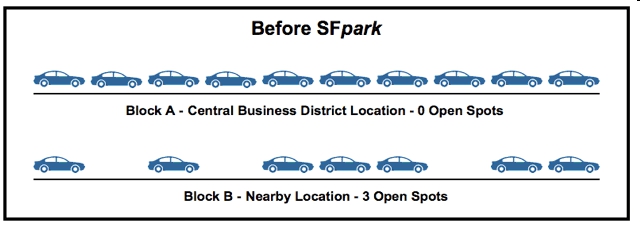
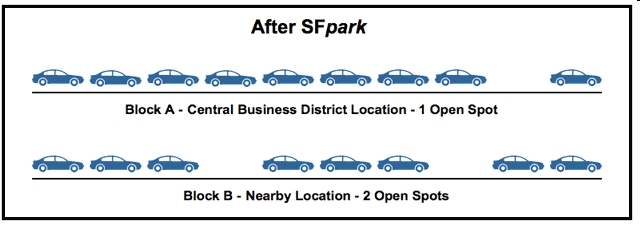
Figure 1. Performance prices create open spaces on every block.
Beyond managing the curb parking supply, SFpark can depoliticize parking by stating a clear principle for setting the prices for curb spaces: the lowest prices the city can charge without creating a parking shortage. Because San Francisco has set a policy goal for how curb parking should perform, the demand for parking will set the prices.
Performance parking programs do not rely on complex models to set prices; they rely only on paying attention to the results. After shifting from a revenue goal to an outcome goal and choosing the occupancy rate as the desired outcome, the city council will no longer have to vote on parking prices. If too many curb spaces are vacant, the price will go down, and if no curb spaces are vacant, the price will go up. Wanting more money will no longer justify raising prices. Relying on the power of an impersonal market test to set prices makes an end run around the politics of parking.
If the Price Is Right, Customers Will Come
Often when I present a proposal for performance parking prices in a city, someone in the audience vehemently says something like “If this city operates the parking meters in the evening, I will never drive downtown to eat in a restaurant again.” This threat to boycott downtown restaurants would be a convincing argument if many curb spaces remained empty after the meters began operating in the evening. But this threat ignores the key argument for performance prices: If the meters are priced right, cars will fill most of the curb spaces, leaving only one or two vacant spaces on each block. If most curb spaces are filled, parking meters can’t be chasing all the customers away.
Meters will chase away some drivers, but the curb spaces these drivers would have occupied will then become available to customers who are willing to pay for parking if they can easily find a convenient curb space. Because the curb spaces will remain almost fully occupied, merchants shouldn’t be alarmed that performance prices will harm their businesses. And who is likely to leave a bigger tip in a restaurant? Drivers who are willing to pay for parking if they can always find open curb spaces? Or drivers who will come only if they can park free after they circle the block a few times to find free parking?
The benefits don’t stop with bigger tips. Whenever I am in a restaurant, I usually ask the waiters where they park. If the meters cease operating at 6 p.m. in the area, waiters often tell me they try to arrive shortly before 6 p.m. so they can find a meter and park free for the whole evening. But the curb spaces these waiters use are then not available for restaurant customers. If cities instead charge performance prices for curb parking and run the meters as late as needed to manage demand, waiters can park off-street or farther away in cheaper curb spots, making the most convenient curb spots available for more restaurant customers who can leave more tips for the waiters.
Both common sense and empirical research suggest that performance-priced curb parking will motivate more people to carpool, because carpoolers can share the cost of parking while a solo driver pays the full cost. Waiters who park free at the curb will probably be solo drivers, but diners who pay to park may arrive with two, three, or four customers in a car. Further, performance prices will promote faster turnover because drivers will pay as long as they park. If a curb space turns over twice during the evening, each space can deliver two groups of diners to a restaurant rather than one waiter. For both reasons—higher-occupancy vehicles and faster turnover—performance prices for curb parking will attract more customers to a business district. With more customers, the restaurants can expand and hire more waiters and pay more in sales taxes. Charging performance prices to manage curb parking can thus benefit many people, including even those who don’t live in the metered areas.
A further advantage of performance prices is that they will decline when demand declines during a recession. The price of curb parking will automatically fall to keep the customers coming. The cheaper curb parking will help businesses survive and prevent job losses. But if curb parking prices remain high during a recession, curb spaces will be underoccupied, stores will lose customers, and more people will lose jobs.
If cities eliminate cruising by charging performance prices for curb parking, where will the cruising cars go? Because drivers will no longer have to arrive at their destinations five to ten minutes early to search for a curb space, their vehicle trips will be five to ten minutes shorter. The reduction in traffic will come not from fewer vehicle trips but from shorter vehicle trips.
Everybody wants something for nothing, but we should not promote free parking as a principle for transportation pricing and public finance. Using performance prices to manage curb parking can produce a host of benefits for businesses, neighborhoods, cities, transportation, and the environment. Parking wants to be paid for.
2. RETURN PARKING REVENUE TO PAY FOR LOCAL PUBLIC SERVICES
Drivers want to park free, and that will never change. What can change, however, is that people can want to charge for curb parking. The simplest way to convince people to charge for curb parking in their neighborhood is to dedicate the resulting revenue to paying for added public services in the neighborhood, such as repairing sidewalks, planting street trees, and putting utility wires underground. That is, the city can offer each neighborhood a package that includes both performance-priced curb parking and the added public services financed by the meters. Performance pricing will improve the parking and the revenue will improve the neighborhood. The people who live and work and own property in the neighborhood will see the meter money at work, and the package will be much more popular than meters alone. Two examples illustrate this point.
Old Pasadena
Old Pasadena, a historic business district in Pasadena, California, is the leading example of a battered area that dramatically improved after the city used parking meter revenue to finance added public services. Spending more than $1 million a year of meter money on new public services helped convert what had been a commercial skid row into one of the most popular tourist destinations in southern California.
If all parking revenue disappears into a city’s general fund, business leaders and residents probably won’t campaign for meters, even with all the sophisticated hardware now available to charge performance prices. If meter money stays in the neighborhood, it will probably be spent on things the residents value highly. And if new public spending in a neighborhood is financed by new revenue generated in that neighborhood, residents in the rest of the city will probably find this spending more acceptable.
Redwood City
In 2005, Redwood City, California, south of San Francisco, adopted legislation establishing a performance parking policy and returning the meter revenue to the metered district. The city council set a performance goal for curb parking—a target occupancy rate of 85 percent—and gave city staff the responsibility for adjusting prices to achieve the target occupancy. The council thus set parking policy, not parking prices. The council also dedicated the meter revenue to pay for public improvements in the metered zone. Once the merchants understood that the revenue would remain in the metered district, they strongly backed the proposal, and the members of the city council voted for it unanimously.
When Redwood City began to charge performance prices for curb parking, it also removed the time restrictions at meters, and this has been the program’s most popular feature. Because curb parking prices are higher than the adjacent off-street prices, most drivers who want to park for a long time naturally choose the off-street spaces.
Removing time limits for curb parking is especially important if meters operate in the evening. Having a one-hour time limit can make the curb spaces almost useless for people who want to dine in a restaurant or go to a movie. In 2009, desperate for new revenue, Los Angeles extended the hours of meter operation to 8 p.m. in business districts but left many of the one-hour time limits in place. As a result, many spaces remain empty in the evening and most revenue is from tickets for overtime parking. The time limits harm the adjacent businesses by making it difficult for restaurant or theater patrons to park and by irritating customers who get tickets. If customers have convenient curb parking, businesses will prosper and the city will receive more sales tax revenue, so removing time limits and pricing curb spaces to yield one or two vacancies in each block can help everyone.
3. REMOVE MINIMUM PARKING REQUIREMENTS
Reform is not only adopting good policies but also repealing bad policies. Requiring all buildings to provide ample parking is one such bad policy that cities should repeal.
In Greek mythology, a cornucopia always overflowed with whatever its owner wanted. Requiring ample parking does give us all the free parking we want, but it also distorts transportation choices, debases urban design, damages the economy, and degrades the environment.
Some cities have begun to remove minimum parking requirements, at least in their downtowns, for two reasons. First, parking requirements prevent infill redevelopment on small lots, where fitting both a new building and the required parking is difficult and expensive. Second, parking requirements prevent new uses for many older buildings that lack the parking spaces required for the new uses.
A search of newspaper articles about minimum parking requirements found 129 reports of cities that have removed off-street parking requirements in their downtowns since 2005. Although newspaper articles do not represent what all cities are doing, the articles include many comments on why cities are beginning to change their policies. Some of the reasons given for removing parking requirements are “to promote the creation of downtown apartments” (Greenfield, Massachusetts), “to see more affordable housing” (Miami), “to meet the needs of smaller businesses” (Muskegon, Michigan), “to give business owners more flexibility while creating a vibrant downtown” (Sandpoint, Idaho), and “to prevent ugly, auto-oriented townhouses” (Seattle).
Removing a parking requirement is not the same, however, as restricting parking or putting the city on a parking diet. Rather, parking requirements force-feed the city with parking spaces, and removing a parking requirement simply stops the force-feeding. Ceasing to require off-street parking gives businesses the freedom to provide as much or as little parking as they like. Cities can remove minimum requirements without imposing maximum limits, and opposition to parking limits should not be confused with support for minimum requirements. Minimum parking requirements may be our most disastrous experiment ever in social engineering, and ceasing to require off-street parking is not social engineering.
An Example from Downtown Los Angeles
Many older downtowns have some wonderful buildings in terrible condition. Minimum parking requirements make restoring these historic buildings difficult or impossible because they rarely have all the parking spaces cities require for new uses. Spring Street in Los Angeles, once known as the Wall Street of the West, is a prime example. It has the nation’s largest collection of intact office buildings built between 1900 and 1930. Starting in the 1960s, the city’s urban renewal program moved most office uses a few blocks west to Bunker Hill and left many splendid Art Deco and Beaux Arts buildings on Spring Street vacant except for retail uses on the ground floor.
In 1999, Los Angeles adopted its Adaptive Reuse Ordinance (ARO), which allows the conversion of economically distressed or historically significant office buildings into new residential units—with no new parking spaces. Before 1999, the city had required two parking spaces per condominium unit in downtown Los Angeles; in effect, the city was assuming that no housing was better than any housing without all the required parking spaces. Michael Manville studied the results of the ARO and found that many good things can happen when a city removes its parking requirements.
Developers used the ARO to convert historic office buildings into at least 7,300 new housing units between 1999 and 2008. All the office buildings had been vacant for at least five years, and many had been vacant much longer. By contrast, only 4,300 housing units were added in downtown between 1970 and 2000.
Skeptics doubted that banks would finance developers who wanted to convert office buildings into residential condominiums without two parking spaces each, but the skeptics were proved wrong. Developers provided, on average, only 1.3 spaces per unit, with 0.9 spaces on-site and 0.4 off-site in nearby lots or garages. Had the ARO not been adopted, the city would have required two on-site spaces for every unit, or more than twice as many as developers did provide. Manville noted, “The ability to supply parking off-site helped developers simultaneously satisfy lenders, minimize development costs, and maximize the potential of an old building.”[1] Deregulating both the quantity and the location of parking for the new housing was a key factor in restoring and converting the 56 office buildings Manville studied. Manville concluded that removing the parking requirements, “led to both more housing and a greater variety of housing. Not only were more units built, but these units were constructed in buildings and neighborhoods that had long been stagnant and underused. Further, a number of these buildings unbundled parking from rent, allowing them to target an underserved demographic—people without cars.”[2]
The ARO also exempts the converted office buildings from other planning requirements, such as density and height limits for residential uses, so the exemption from parking requirements isn’t the sole reason for the conversions. Nevertheless, if the city hadn’t removed the parking requirements these conversions couldn’t have occurred, and the conversion boom shows that there is a residential market for people who don’t own two cars. These results strongly suggest that until the ARO was adopted, minimum parking requirements had been preventing the restoration and conversion of many obsolete office buildings into housing.
The ARO also produced other benefits. It allowed the preservation of many historic buildings that had been vacant for years and might have been demolished if minimum parking requirements had remained in place. (See Figure 2) Historic buildings are a scarce resource in any city, and the evidence shows that parking requirements stood in the way of preserving these buildings. The ARO applied only to downtown when it was adopted in 1999, but the benefits were so quickly apparent that it was extended citywide in 2003. We usually can’t see things that don’t happen or count things that don’t occur, but the beautifully restored buildings on Spring Street give us some idea of what other cities are missing.
Figure 2
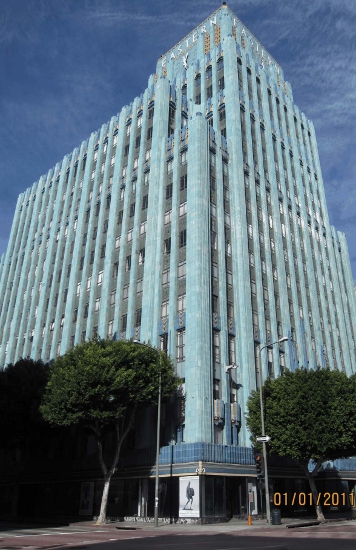
Figure 2. Office building in Los Angeles converted to housing without adding on-site parking.
An Example from Silicon Valley
Suburban governments often require more space for cars than for people. Figure 3 shows the relationship between buildings and the required parking for several land uses in San Jose, California. The area required for parking at a restaurant, for example, is more than eight times larger than the dining area in the restaurant itself. Even if the required parking is used only intermittently, as at an auction house, the city requires the parking lots to be big enough to meet the peak demand for free parking.
Figure 3.
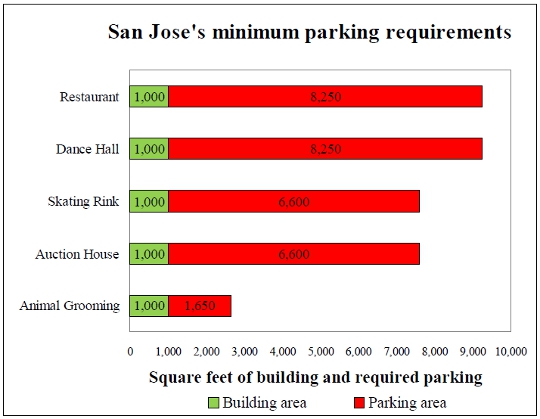
High parking requirements help to explain the parking-dominated landscape in many parts of San Jose and the rest of Silicon Valley. Developers rarely provide more parking than cities require, so the buildings in the picture are probably as dense as they can be by law. Many of the spaces, especially the ones at the periphery of the parking lots and adjacent to the streets, remain vacant almost all the time. So what would happen if San Jose removed off-street parking requirements, charged performance prices for on-street parking, and returned the resulting revenue to the metered neighborhoods? Property owners might decide their land was more valuable for housing than for vacant parking spaces.
Figure 4.
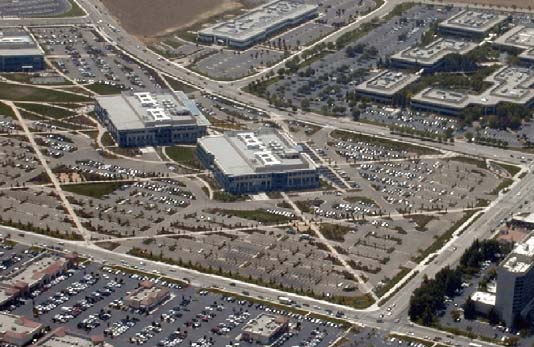
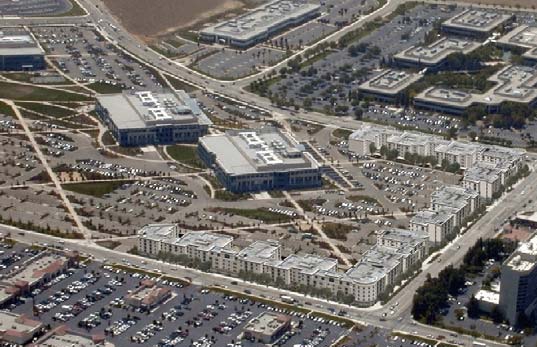
Figure 4. Parking lots in Silicon Valley before and after liner buildings.
Everyone in Silicon Valley complains about high housing prices, long commutes, traffic jams, air pollution, and the difficulty of attracting employees. Building housing on the periphery of parking lots would help to solve all these problems. The bottom picture in Figure 4 suggests what might happen without minimum parking requirements. If apartment buildings were built next to the sidewalks, anyone walking, biking, or driving by would see what looks like a real city. The smartest way to travel is to be near your destination already, and this job-adjacent housing would give commuters out-of-car experiences while walking to work.
Liner Buildings
New urbanists refer to buildings that mask a parking lot or garage from the street as liner buildings. Figure 5 shows one of the liner buildings inserted in the bottom picture in Figure 4. The term liner suggests that the wrapping is a superficial way to hide what is inside, but in this case the wrapping would probably be far more valuable than the parking spaces it would replace. Parking is probably the least profitable use of this peripheral land since almost any other use would yield far more revenue. In parking, as in everything else, there are opportunity costs.
Figure 5.
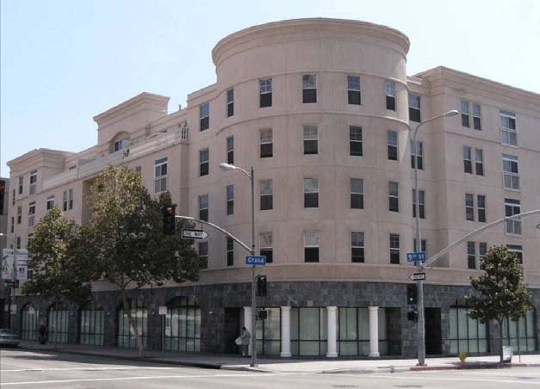
Figure 5: Liner building.
The five-story apartment buildings shown in Figure 5 are not the only option for liner buildings. Courtyard apartments, row houses, office buildings, stores, restaurants, or even single-family houses might be the best use for the land on the periphery of a parking lot. Liner buildings can create the atmosphere of a city, not a parking lot. If cities stop requiring off-street parking, vast suburban parking lots can evolve into real communities.
The land is already assembled, and the housing could be built without new parking because the existing spaces could be shared between office buildings and apartments. To avoid a parking shortage, the owner would probably have to unbundle the cost of parking from the rent for both apartments and offices, so car owners would pay only for the parking spaces they use. Some residents who work in a nearby office building may find they could easily live with only one car, and they would appreciate the freedom to rent an apartment without paying for two parking spaces.
If cities remove off-street parking requirements, they will have to charge performance prices for the curb spaces to prevent spillover, but this will produce another great benefit: All the money paid for curb parking will become a new revenue stream to pay for local public services. Curb parking will become too valuable not to meter.
Removing the parking requirements for both housing and offices can produce a cascade of benefits: shorter commutes, less traffic, a healthier economy, a cleaner environment, and more affordable housing. And the benefits don’t stop there. If we reform our misguided planning for parking, the money now spent on cars and fuel will become available for other things. Cars and fuel are often imported, but we cannot import apartment buildings. Shifting spending from cars, fuel, and parking to housing construction will increase the demand for labor in a host of professions, such as architects, carpenters, electricians, engineers, gardeners, glaziers, laborers, lawyers, locksmiths, painters, plumbers, real estate agents, roofers, surveyors, and even urban planners. Importing less oil and hiring all these people to build infill development will boost the whole economy.
The upside of the mess we have made is that we have an accidental land bank readily available for job-adjacent housing. This land is now locked up in required parking, but if cities remove their unwise parking requirements we can reclaim land on a scale that will rival the Netherlands.
A LOVE AFFAIR OR AN ARRANGED MARRIAGE?
Some people assume that America has a freely chosen love affair with the car. I think it was really an arranged marriage. By recommending minimum parking requirements in zoning ordinances, the planning profession was both a matchmaker and a leading member of the wedding party.
Table 1 shows the large amount of parking that cities require for many land uses. The data are taken from the American Planning Association’s latest survey of parking requirements for 662 different land uses in American cities. For example, West Sacramento, California, requires 1 parking space per 20 square feet of floor area in a church hall. Because parking lots occupy about 330 square feet per parking space, a parking requirement of 1 space per 20 square feet of floor area produces a parking lot that is 16.5 times the size of the church hall itself (330 ÷ 20 = 16.5). Requiring any building to provide more than 3 spaces per 1,000 square feet of floor area produces a parking lot bigger than the building itself (because 3 parking spaces occupy 990 square feet), and most parking requirements are greater than 3 spaces per 1,000 square feet. These excessive requirements create what amounts to parking pollution in cities.
Table 1.
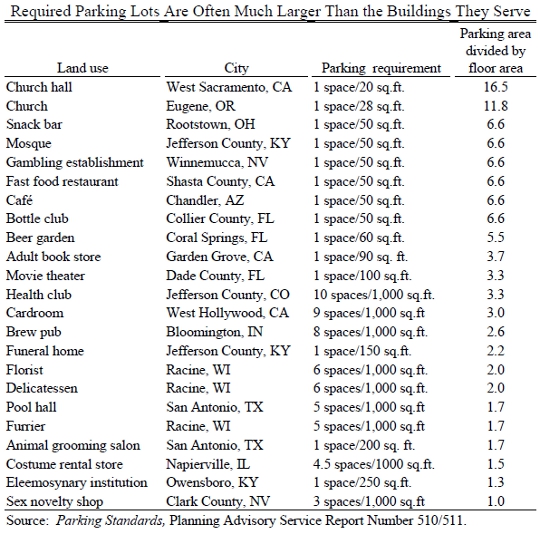
Minimum parking requirements have severed the link between the cost of providing a parking space and the price that drivers pay for it. Cities respond to increasing vehicle travel by increasing their parking requirements, and when citizens then object to traffic congestion, cities respond by restricting development density and requiring even more parking. The increased travel distances between sites surrounded by parking lots increase the need for cars for most trips, and the increased car ownership further inflames the opposition to charging anything for parking.
Neither planners nor politicians seem to realize, however, that the parking requirements (and the free parking they produce) accelerate sprawl. Cars have replaced people as zoning’s real concern, and free parking has become the arbiter of urban form, with serious consequences far beyond parking itself.
Parking requirements create winners and losers: people win in their role as drivers, and they lose in their many other roles. People who don’t own cars don’t organize to change the system, however. Instead, most of them change their behavior to join the winners. More people buy cars, cities further increase their parking requirements, and the system becomes even more difficult to reform. Because cities sprawl faster and farther, cars become necessary for almost every errand. Even those who prefer a less automobile-dependent lifestyle find themselves in the motoring majority, driving everywhere, cursing congestion, staring at taillights, inhaling exhaust, and expecting to park free when they get wherever they are going.
A QUIET REVOLUTION IN PARKING POLICIES
Academic research has repeatedly shown that minimum parking requirements inflict widespread damage on cities, the economy, and the environment. But this research has had little influence on planning practice. Most city planners continue to set minimum parking requirements as though nothing had happened. The profession’s commitment to minimum parking requirements seems to be a classic example of groupthink, which Yale professor of psychology Irving Janis defined as “a mode of thinking that people engage in when they are deeply involved in a cohesive in-group, when the members’ striving for unanimity overrides their motivation to realistically appraise alternative courses of action.”[3] The process of setting minimum parking requirements displays most of the symptoms of defective decision making that Janis identified with groupthink: incomplete survey of alternatives, incomplete survey of objectives, failure to examine risks of preferred choice, poor information search, and selective bias in processing information at hand. Unfortunately, academic research on parking has had little effect on practitioners’ groupthinking, even though the research shows that a central part of the practice does so much harm.
Requiring Peter to pay for Paul’s parking, and Paul to pay for Peter’s parking, was a bad idea. People should pay for their own parking, just as they pay for their own cars and their own gasoline. The planning profession has given cities bad advice about parking requirements, which have misshaped our cities to fit the car—almost without planners’ noticing it. Parking requirements hide the cost of parking, but they cannot make it go away. Free parking often means fully subsidized parking. At the very least, parking requirements should carry strong warning labels about all the dangerous side effects.
Despite institutional inertia in the practice of planning for parking, reforms are sprouting. Paradigm shifts in urban planning are often barely noticeable while they are happening, and after they have happened it is hard to tell that anything has changed. But shifts happen. Planners simply begin to understand cities in a new way and can scarcely remember a time when they understood cities differently. The incremental reforms now under way suggest that off-street parking requirements will not quickly disappear but will gradually erode. Cities may slowly shift from minimum parking requirements to performance parking prices without explicitly acknowledging that planning for parking had ever gone wrong. Eventually, however, planners and politicians may recognize that minimum parking requirements were a poisoned chalice, providing ample free parking while hiding the many costs.
All parking is political, and the prospects for parking reform depend on what the political context allows. Diverse interests from across the political spectrum can for different reasons support a shift from minimum parking requirements to performance parking prices. Liberals will see that it increases public spending. Conservatives will see that it reduces government regulation. Environmentalists will see that it reduces energy consumption, air pollution, and carbon emissions. Businesses will see that it unburdens enterprise. New urbanists will see that it enables people to live at high density without being overrun by cars. Libertarians will see that it increases the opportunities for individual choice. Developers will see that it reduces building costs. Neighborhood activists will see that it devolves public decisions to the local level. Local elected officials will see that it reduces traffic congestion, encourages infill redevelopment, and pays for local public services without raising taxes. The current system of planning for parking does such widespread harm that the right reforms can benefit almost everyone.
But all these people also want to park free. They may not have an ideological or professional interest in free parking, but they do have a personal interest in it. This personal interest in free parking helps explain the popularity of minimum parking requirements. But the right use of parking meter revenue can also create a countervailing personal interest in charging for curb parking. Cities can create the necessary political support for performance parking prices by dedicating the meter revenue to pay for enhanced public services on the metered streets. Localizing the revenue from parking meters will create local interest in market prices for parking. Instead of free parking, we can have a free market in parking.
Market prices can manage the demand for parking spaces. If cities continue to offer free curb parking and require ample off-street parking, it won’t be because prices don’t work but because planners and politicians choose not to change course. There is a way, but we need the will. In both sprawling rich cities and crowded poor cities, charging performance prices for curb parking, spending the revenue on local public services, and removing off-street parking requirements can do a world of good.
Notes
[1] Manville, Michael. “Parking Requirements as a Barrier to Housing Development: Regulation and Reform in Los Angeles.” UCLA Lewis Center Working Paper, University of California, Los Angeles, 2010, p 17.
[2] ibid., p 26.
[3] Janis, Irving. Groupthink: Psychological Studies of Policy Decisions and Fiascoes. Boston: Houghton Mifflin, 1982. Other definitions of groupthink emphasize conformity and uncritical acceptance of a perceived majority point of view; the lack of creativity or individual responsibility in making decisions; the search for consensus without critically testing, analyzing, and evaluating ideas; the desire to minimize conflict; and making decisions without weighing all the facts, especially those contradicting the majority opinion.

